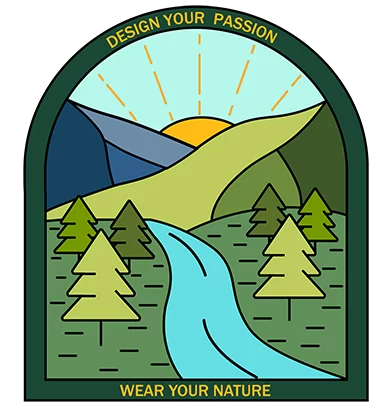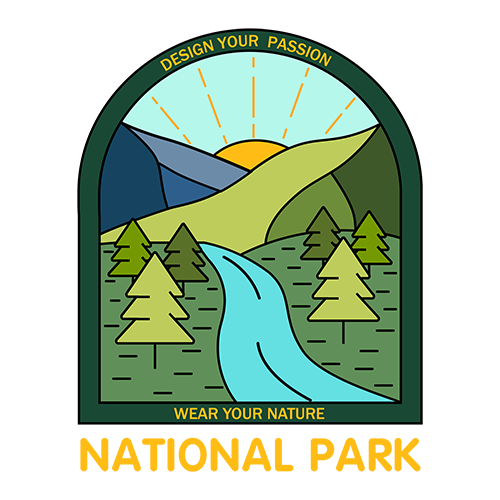Acadia National Park is famous for its breathtaking landscapes and rich ecological diversity. While many visitors are captivated by its rugged mountains and pristine beaches, I think few realize that Acadia is also home to a remarkably diverse flora. If you go at the right time, you will admire the beauty from vibrant wildflower meadows to dense forests and unique coastal flora.
The park’s plant diversity not only enhances its natural beauty but also plays an important role in the local ecosystem. Let me tell you useful information about the fascinating world of Trees in Acadia National Park – Acadia National Park plants. Through my sharing, you will know what are the key plant species in Acadia and when is the best time to visit Acadia National Park to see the flowers. Follow me at nationalparkshops.com!
Acadia National Park Plants
The rich diversity of Acadia National Park is vividly reflected in its extensive plant life, with over 1,100 different plant species thriving across the park’s varied landscapes. This incredible variety is a result of the numerous ecosystems that make up the park, each offering distinct environmental conditions that support a unique range of flora.
Ecosystems in Acadia National Park include wetlands, coastal areas, mountainous regions, forests, and freshwater environments such as streams, lakes, and ponds. Each of these ecosystems has its own set of conditions, such as moisture levels, soil and rock types, and sunlight availability that influence which plant species can thrive there.
Each ecosystem within Acadia National Park contributes to the overall diversity of plant life by providing distinct environmental conditions. The interaction between moisture, soil type, rock type, and sunlight determines the plant communities found in each area, resulting in a tapestry of vegetation that reflects the park’s ecological richness. Whether in the lush forest understory, the dynamic coastal zones, or the serene freshwater habitats, the variety of Acadia National Park Plants showcases the complexity and beauty of this diverse natural landscape.
Therefore, if you have the opportunity to come here, I suggest that you consider adding to the list of things to do in Acadia National Park to see this rich vegetation.
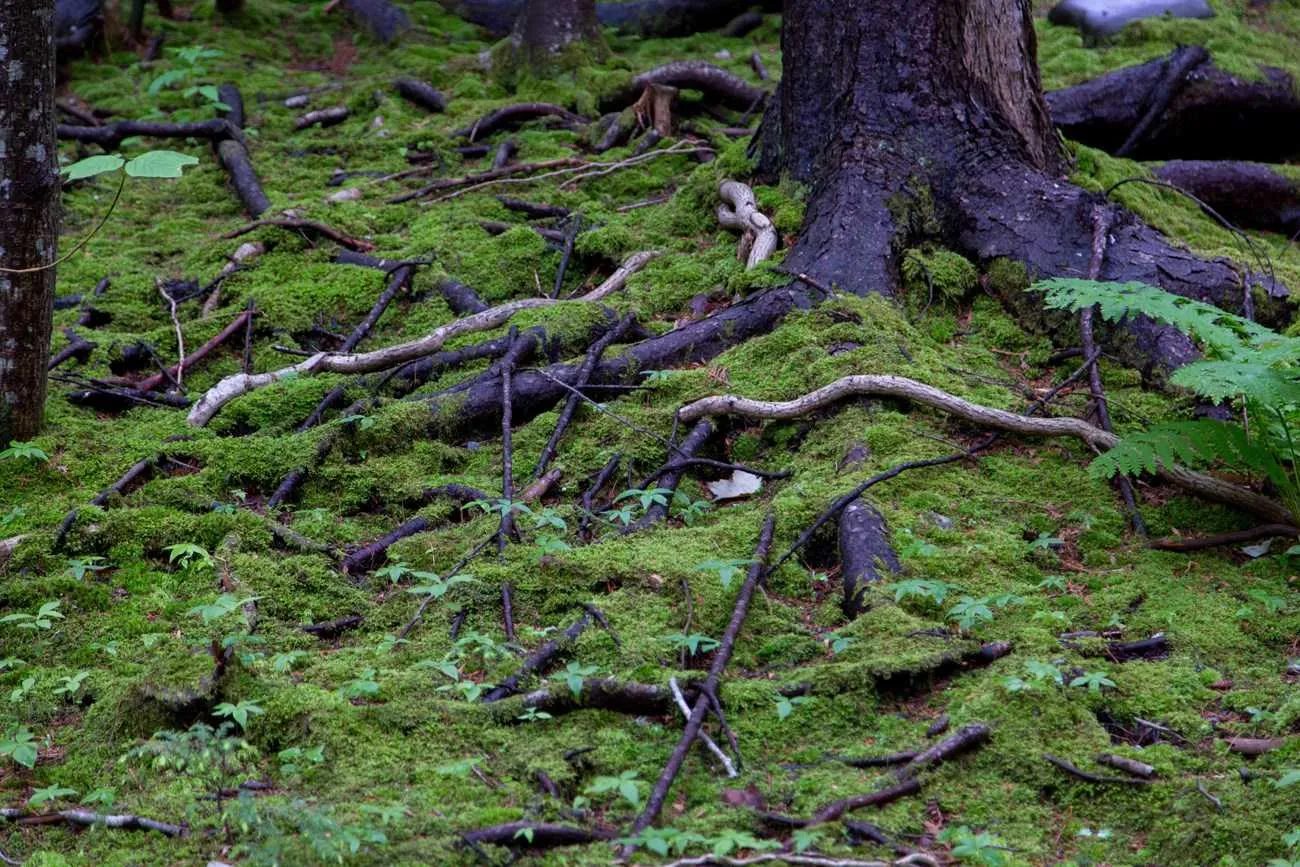
The Common Trees of Acadia National Park
To plan the Acadia National Park road trip successfully, the following is a summary of my understanding of common plants. Check it out if you want to embark on exploring nature.
American aspen and the large-toothed aspen
In Acadia National Park, the American aspen (Populus tremuloides) and the large-toothed aspen (P. grandidentata) are prevalent softwood species. These medium-sized trees are often the first to colonize areas that have been burned or logged. They thrive and grow quickly in diverse conditions, making them key pioneers in forest regeneration.
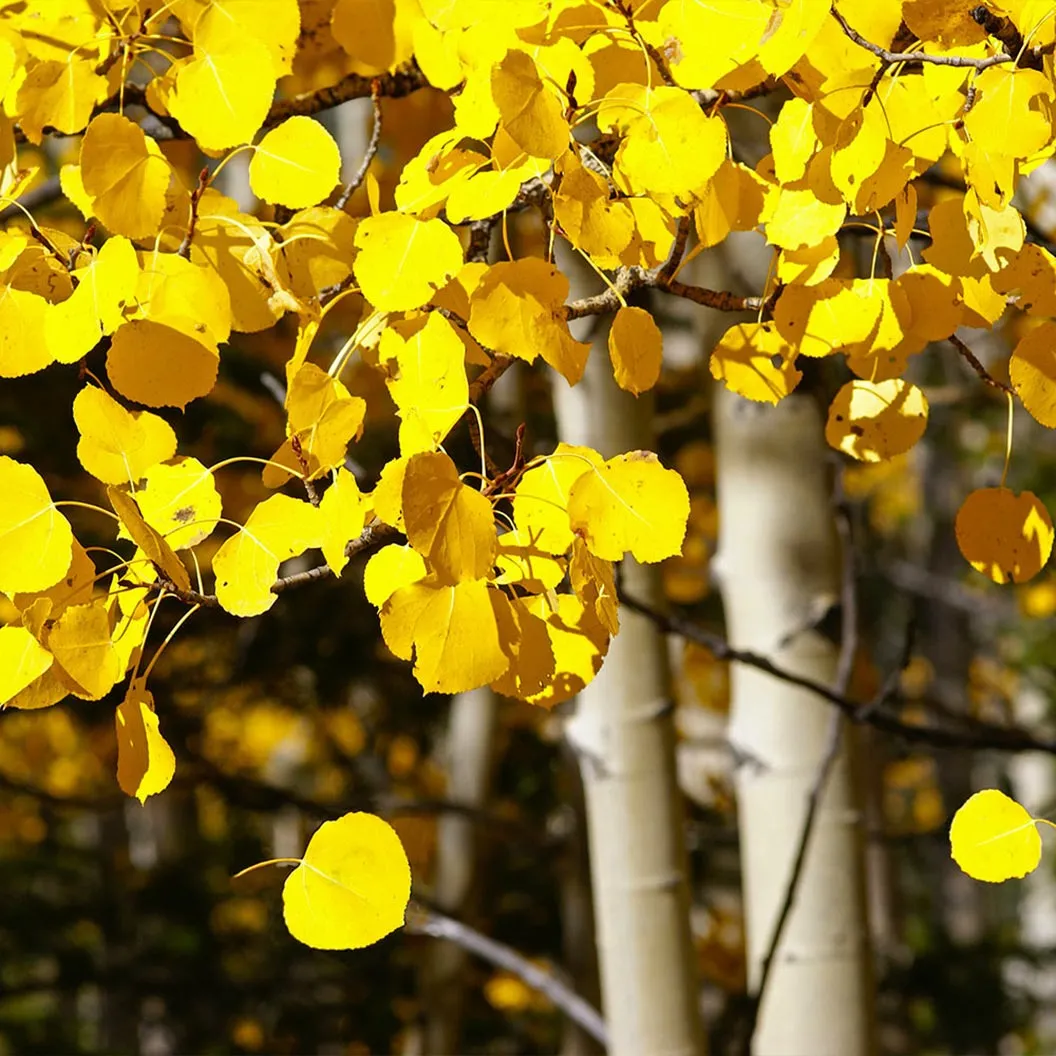
The balsam poplar
Closely related to the American and large-toothed aspens, the balsam poplar (Populus balsamifera) shares similar characteristics. Its leaves are broadly ovate with finely serrated edges, and the tree’s name comes from its distinctive brown, sticky, and aromatic winter buds. Like the aspens, the balsam poplar is a fast-growing, softwood tree known for its resilience. It is quite common in the towns surrounding Acadia National Park.
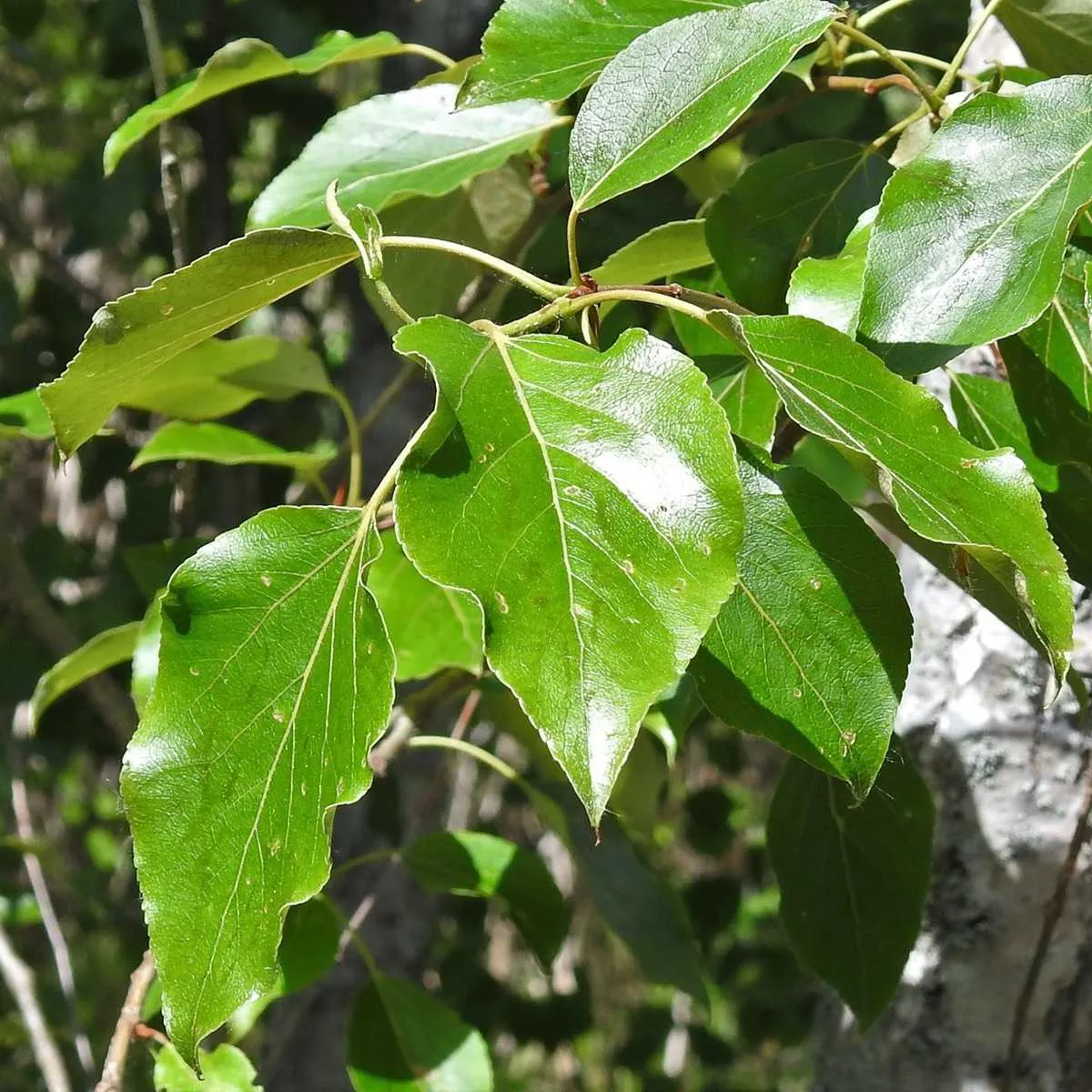
Willows
While willows are generally easy to identify as a group, distinguishing individual species can be quite challenging, similar to the difficulty faced with asters and goldenrods. Even experienced botanists often find it hard to agree on the exact species or subspecies names. Willows, which are typically trees or shrubs, commonly grow along stream banks.
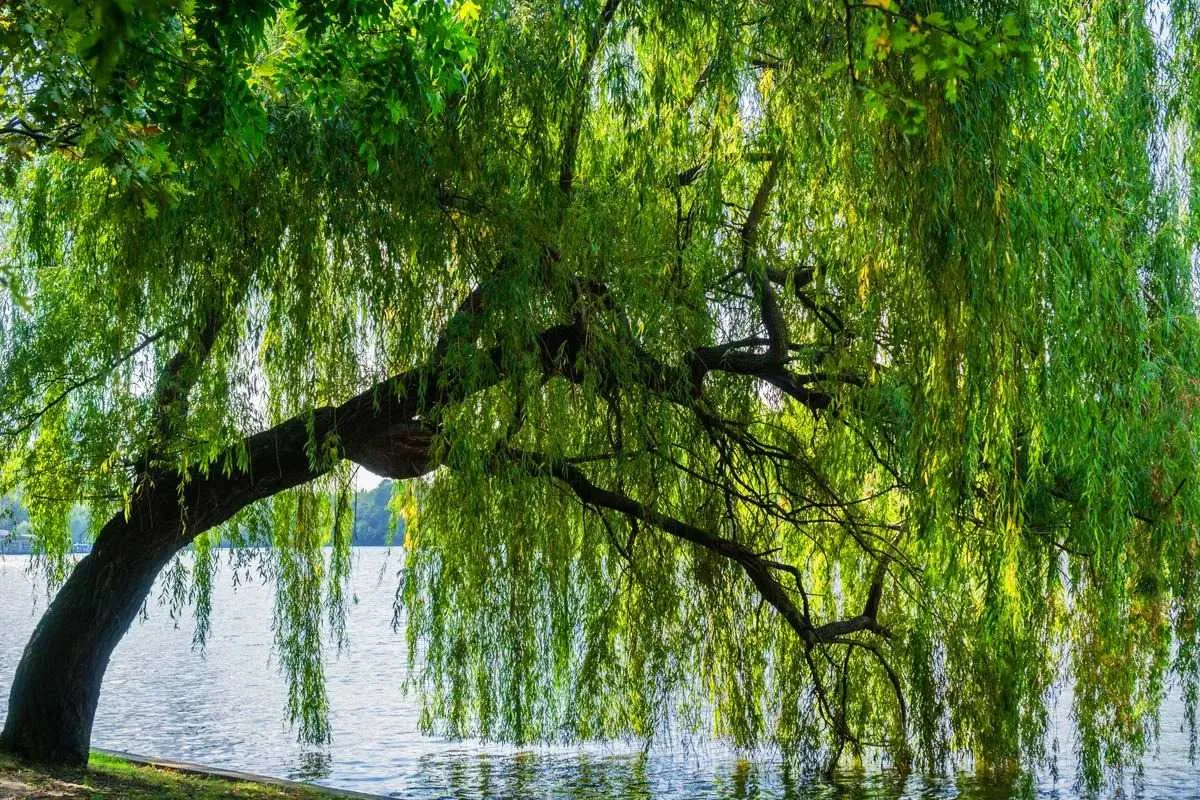
The hop hornbeam
The hop hornbeam (Ostrya virginiana) is a slender, small tree that prefers cool, shaded environments and is relatively rare in this region. Its bark is grayish-brown, thin, and rough, forming loose longitudinal strips. The tree produces fruit that resembles hops, with tiny seeds enclosed in small, inflated sacs. Among native woods, the hop hornbeam is noted for its exceptional strength and hardness.
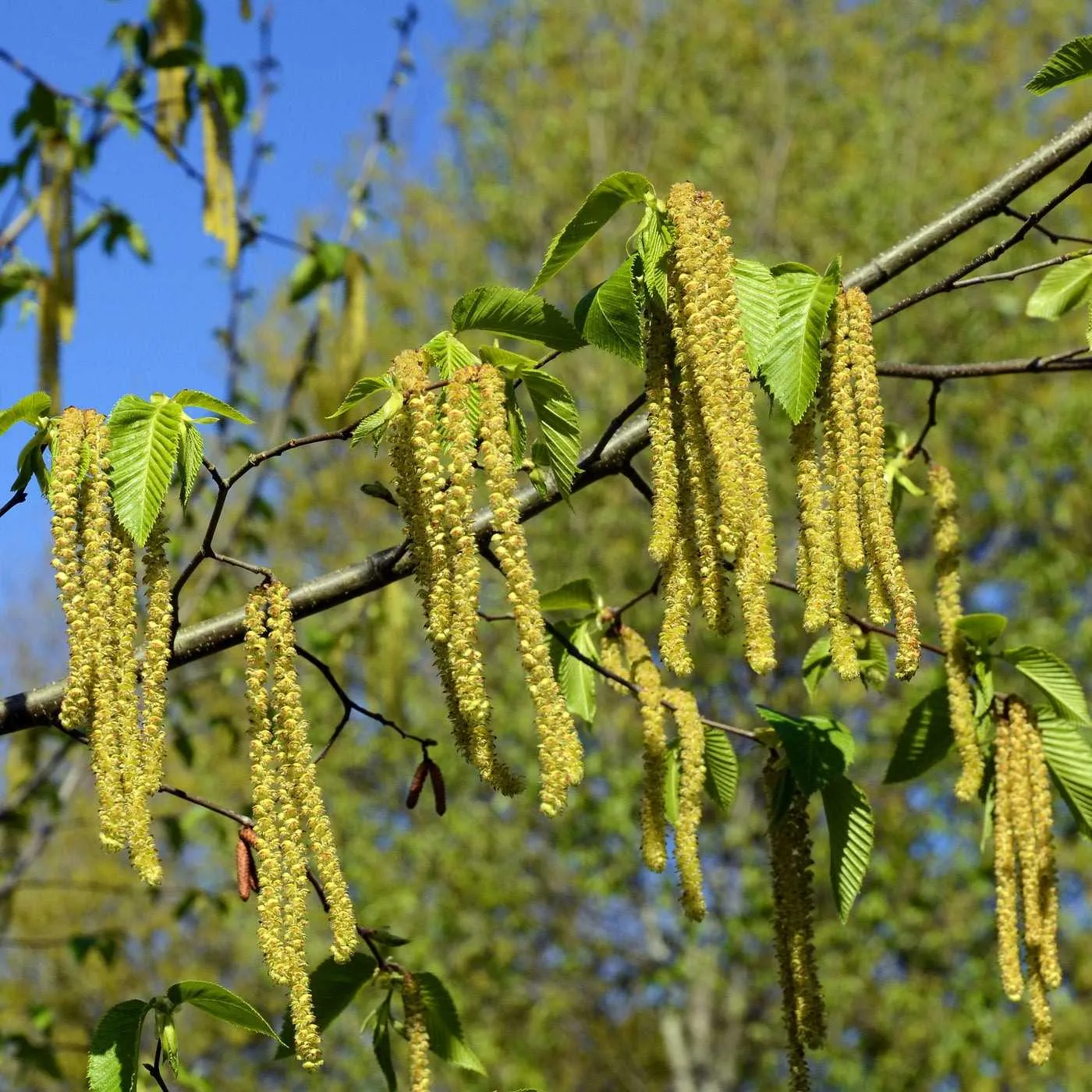
The yellow birch
The yellow birch the largest of our native birch species, is easily identified by its distinctive brassy or golden bark. In open areas, these trees typically begin branching near the base, while in denser stands, they often remain branchless for a considerable height. Although it is not as widespread as the canoe birch, the yellow birch is still a common deciduous tree within Acadia National Park.
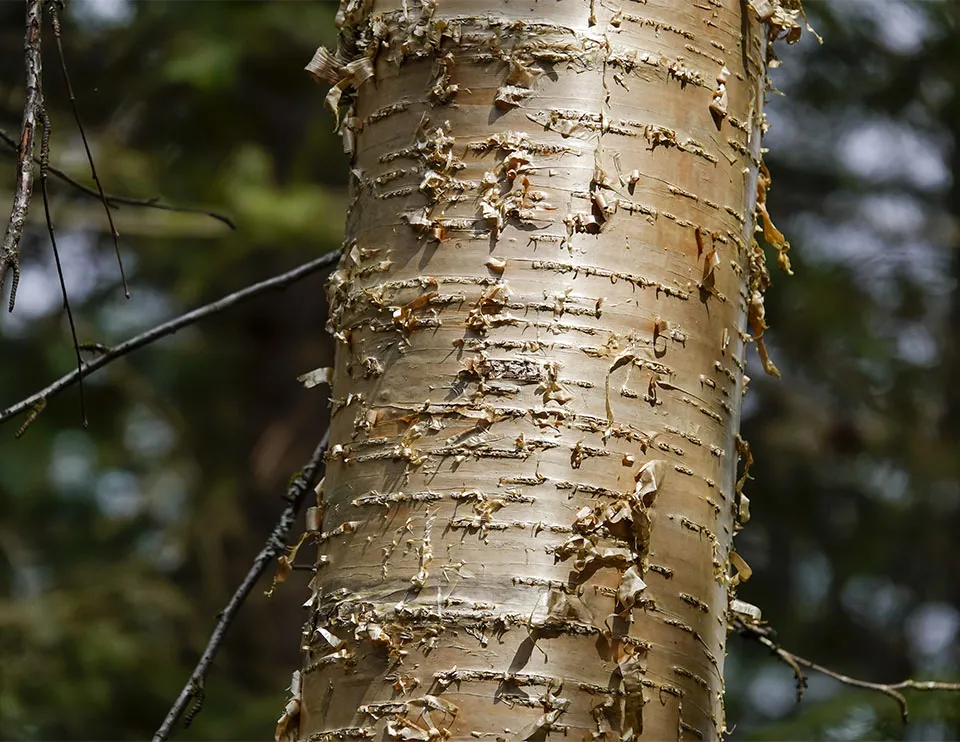
The Gray Birch
The gray birch is a delicate, small tree that thrives in areas where other trees have yet to take root. It is commonly mistaken for its taller relative, the canoe birch. Key differences to help identify the gray birch include its bark, which does not peel off in thin, paper-like layers, and its somewhat smaller, roughly triangular leaves. This pioneer species frequently forms dense clusters. Notably, near the summit of Cadillac Mountain, visitors can observe an extensive stand of gray birch, characterized by its wind-swept and twisted appearance.
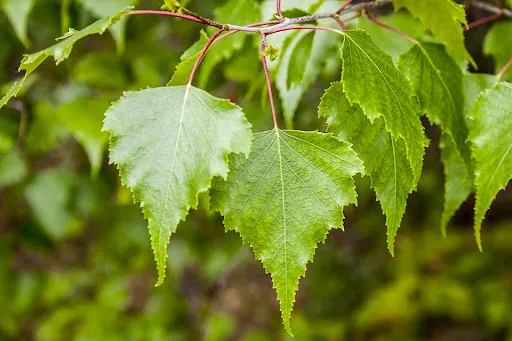
The canoe birch
The canoe birch, also known as the white or paper birch, stands out as one of the most striking trees in the Acadian forest. Whether growing individually or in clusters, this slender, tall tree is notable for its white bark and remains visually appealing throughout the year. While it thrives best in rich soils along stream and lake margins, as well as on wooded hillsides, the canoe birch is adaptable and can be found in a range of different habitats.
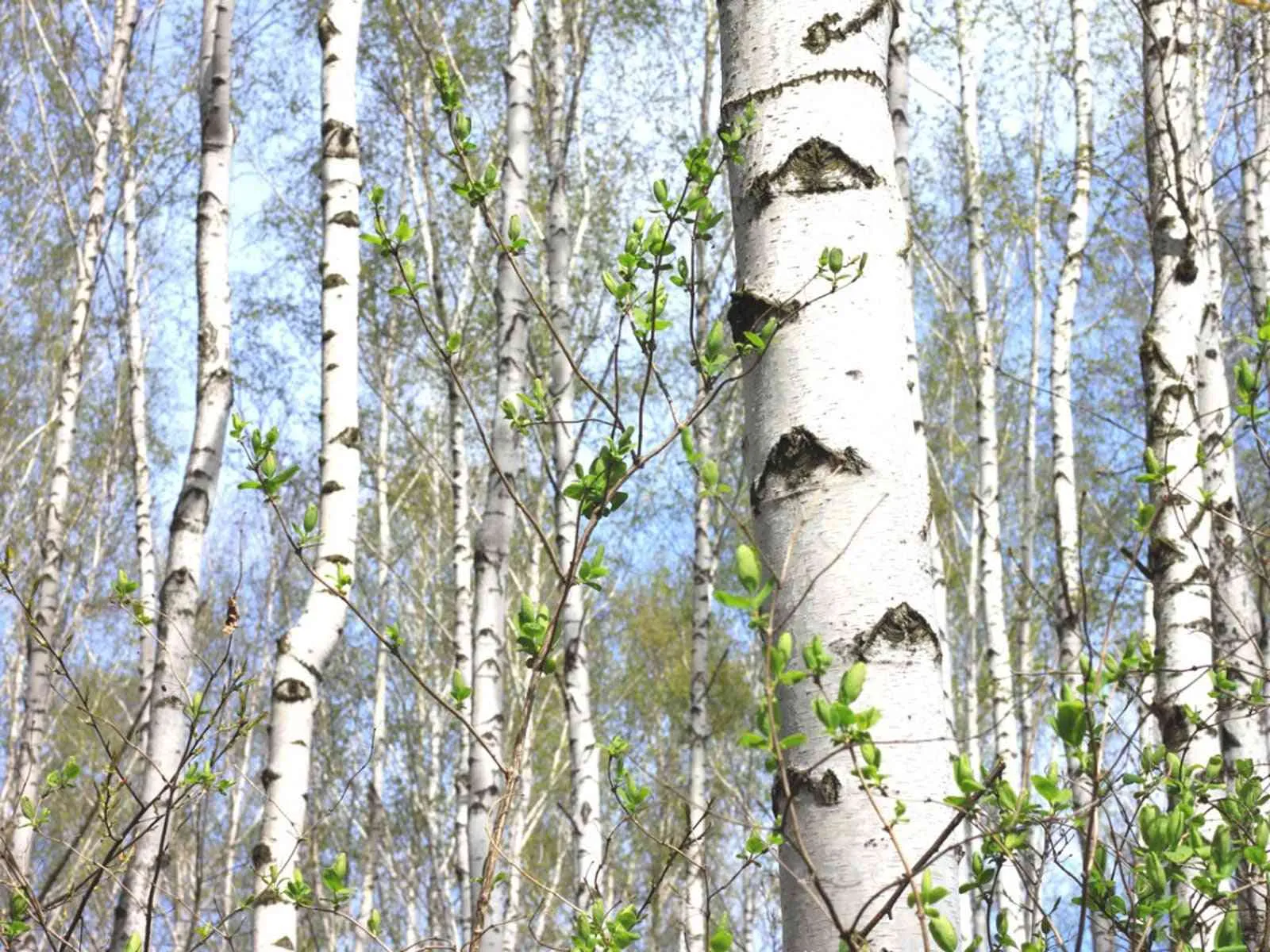
The beech tree
The beech tree is renowned for its sturdy, tall stature and distinctive appearance, making it one of the finest deciduous trees. It features smooth, grayish-brown bark with a mottled texture, and its leaves are thin, silky, and marked by straight parallel veins. The beech produces sweet, triangular fruits encased in small, prickly burs. Its slender, sharp-pointed buds are reddish-brown. These characteristics define the beech, which is a common sight in Acadia National Park.

The Wildflowers of Acadia National Park
Besides the Acadia National Park wildlife ecosystem, in the wooded areas, you will encounter a variety of common native woodland flowers that contribute to the park’s rich biodiversity. Among these, the wild lily-of-the-valley (Maianthemum canadense) is easily recognizable with its delicate, white bell-shaped flowers that bloom in spring.
Another frequent sight is the bunchberry (Cornus canadensis), which boasts clusters of small, white flowers and vibrant red berries that follow. Goldthread (Coptis Trifolia), formerly known as C. groenlandica, features its distinctive, golden-yellow thread-like roots and small, white blooms. The bluebead lily (Clintonia borealis) adds to the colorful tapestry with its striking blue berries and star-shaped flowers. Additionally, the starflower (Trientalis borealis) is notable for its unique star-like arrangement of white flowers.
As the summer progresses into August and September, Acadia National Park Plant’s native wildflowers reach their peak blooming period. During these months, the landscape becomes adorned with the vibrant colors of asters and goldenrods. Asters, with their varied shades of purple, pink, and blue, create a picturesque display, while the goldenrods add a rich yellow hue to the scenery, enhancing the park’s floral diversity and beauty.
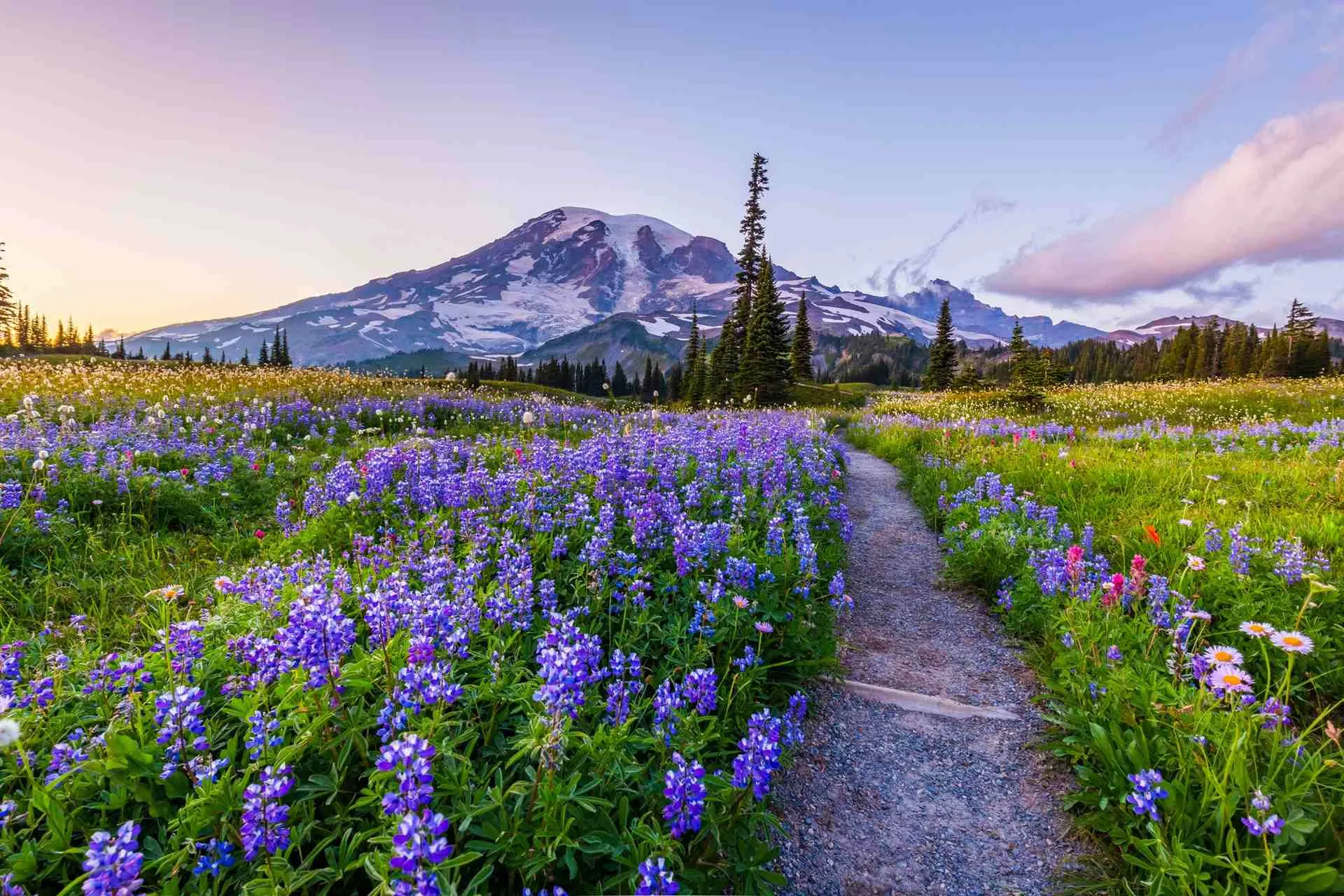
Checklist of Common Native Plants at Acadia
Here is a list of common native found in Acadia National Park plants, including their scientific names and typical locations:


Reference source: https://www.nps.gov/acad/learn/nature/common-native-plants.htm
Freshwater and Marine Plants
Life thrives in the tranquil waters of Acadia National Park, encompassing everything from freshwater lakes, ponds, and streams to wetlands, saltwater marshes, beaches, and the rugged coastline. Aquatic vegetation plays a crucial role in supporting diverse wildlife, ranging from amphibians to waterfowl and fish.
Within freshwater habitats, plants may either float freely on the surface or be anchored to the bottom. These plants might have leaves that emerge from the water, float atop it, or remain submerged. Similarly, marine plants like seaweed can drift in the open ocean or cling to rocks, as seen with rockweed.
In the marine environment, you’ll find Seaweed species like Kelp and Rockweed clinging to the rocky shorelines. Eelgrass is another important marine plant found in the park’s shallow coastal waters. It helps stabilize the sediment and provides essential habitat for various fish species.
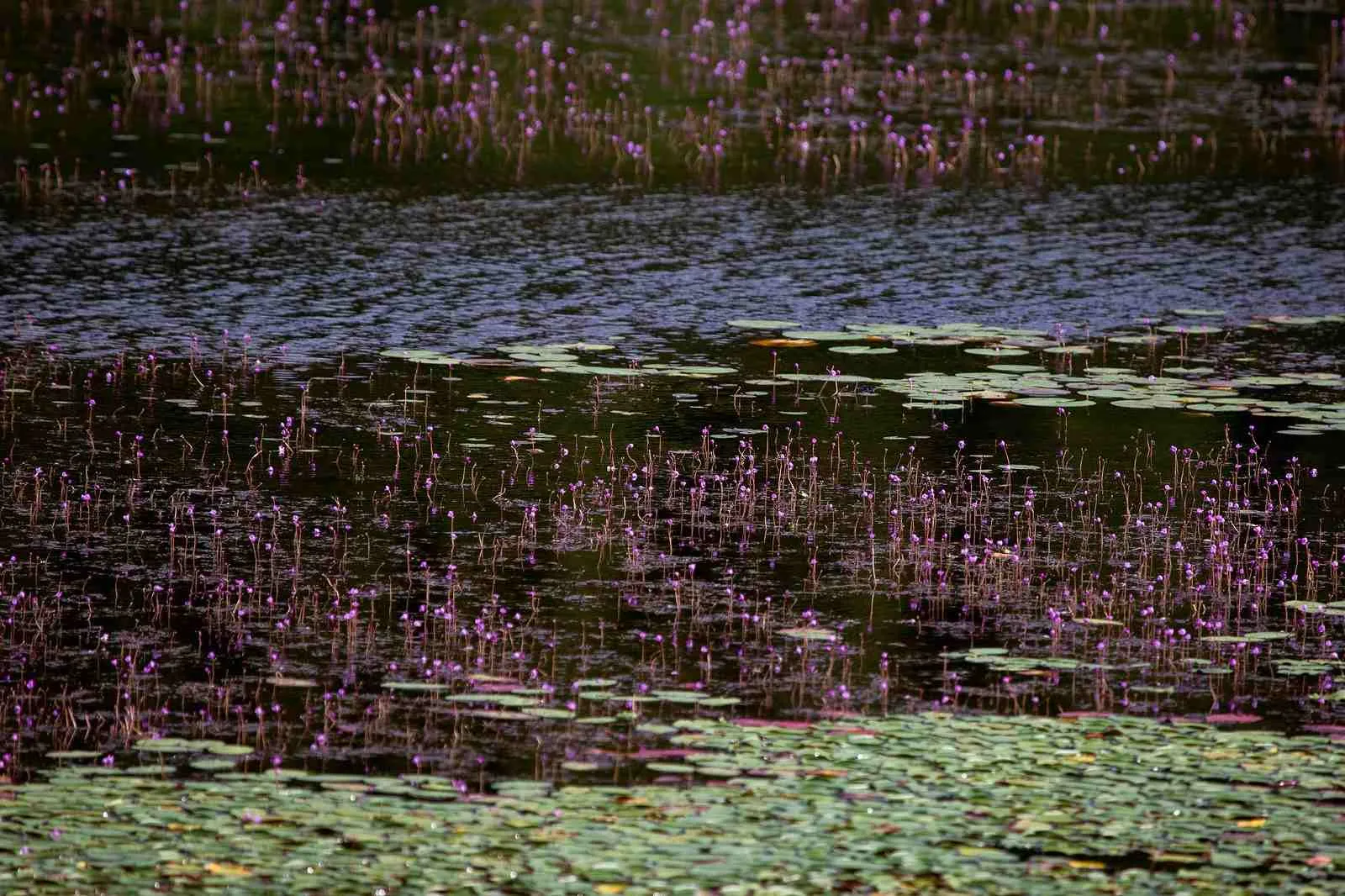
Conclusion
Acadia National Park plants offer a captivating glimpse into the rich biodiversity of this stunning park. From majestic trees to vibrant wildflowers, and from freshwater plants to marine vegetation, Acadia’s flora is integral to its unique beauty and ecological balance. Whether you’re hiking through its ancient forests, strolling along its wildflower-strewn paths, or exploring its coastal waters, the park’s plant life will undoubtedly enhance your visit.
FAQs about Acadia National Park plants
What are the invasive plants in Acadia National Park?
In Acadia National Park, invasive plants like Japanese Barberry, Garlic Mustard, Oriental Bittersweet, Japanese Knotweed, and Purple Loosestrife are a big problem. They harm native biodiversity by forming dense thickets, dominating forest floors, strangling trees, growing through concrete, and altering water flow in wetlands. Managing these invasive species is crucial to protect the park’s natural ecosystems.
What trees are native to Acadia National Park?
Acadia National Park has a variety of native trees that play a key role in its diverse ecosystem. Eastern Hemlock thrives in shady areas, providing important habitat for wildlife. White Pine and Red Maple are tall trees with different characteristics that can be found throughout the park. Yellow Birch and American Beech are easily recognizable in deciduous forests. Northern White Cedar is commonly found near water and is known for its durable wood. These trees are essential to Acadia’s forests, helping to support a wide range of plant and animal species.
What are the purple flowers in Acadia National Park?
Purple flowers like Purple Asters, Lupines, Vervain, Common Self-Heal, and Blue Vervain add color to Acadia National Park. They bloom in various habitats at different times of the year, enhancing the park’s beauty with their vibrant hues.
Regarding Acadia National Park, I have some articles sharing experiences that you can refer to if you are interested: Acadia National Park camping, Acadia National Park in the fall, closest airport to Acadia National Park, Acadia National Park from Portland Maine, Acadia National Park sunrise,…
